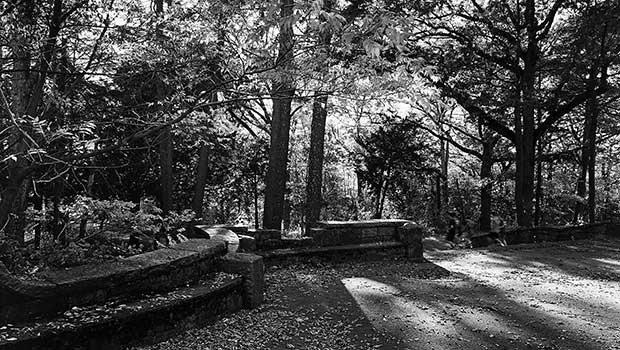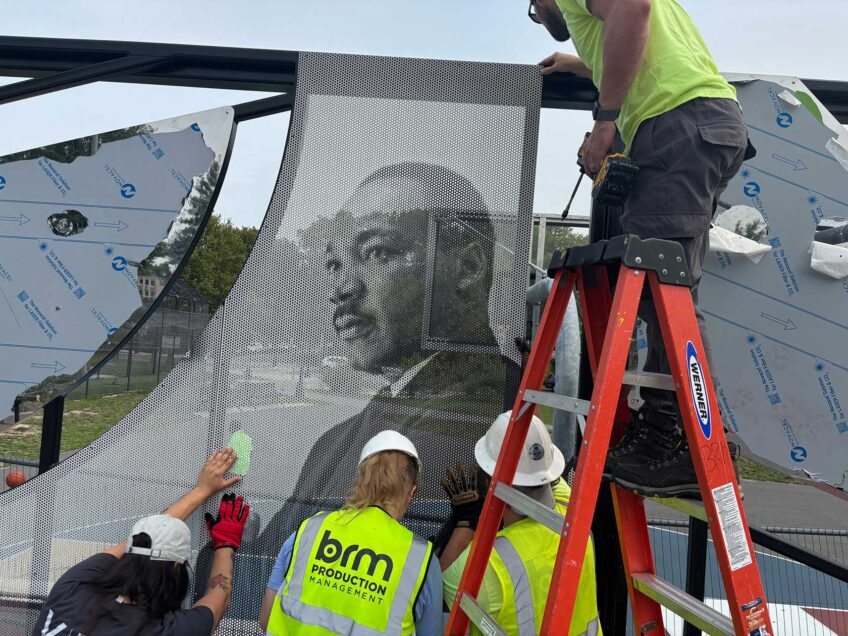
Tucked into the tree-lined path along the Fens, the Emerald Necklace Conservancy’s Shattuck Visitor Center has an enthralling series of photographs by Robin Radin called “Franklin Park: An Ephemeral and Enduring Landscape,” on view until December 2017. The pieces, printed old-school with selenium-toned gelatin silver plates, have a moody, cinematic quality and show Boston’s Franklin Park as it almost never is: empty.

Author: Courtesy Robin RadinImages from Robin Radin’s “Franklin Park: An Ephemeral and Enduring Landscape” at the Emerald Necklace Conservancy’s Shattuck Visitor Center.
On the Web
For more information about Radin’s work, visit: www.emeraldnecklace.org
The black and white landscapes date from 2004 to 2016, but they seem to span all of time. “Shelter in the Wilderness” looks prehistoric, depicting a messy bramble of sticks that might serve to shelter a human lacking tools or skills. It’s more of an overgrown brush than an intentional structure. Next to it, the manmade walkways of “Schoolmaster Hill” feel more urban and contemporary. Though not true of the planned and constructed urban green space, it feels like the images depict the life cycle of the land, from cave dweller to city slicker.
Radin has been photographing for over 35 years. She began her career in Boston with a B.F.A. from Tufts University and the School of the Museum of Fine Arts, and an M.F.A. from the Massachusetts College of Art and Design. She currently serves on the board of the Jamaica Plain Arts Council.
In her artist statement, Radin says, “My photographs aim to reveal how urban wilds and parklands can unexpectedly evoke a human presence.” A lush, mysterious landscape titled “Near the Overlook” does just that. Ivy and greenery curated to look natural and messy surround large ancient trees and a lone stone basin. A passerby might turn the corner at any moment and stumble across the naïve lovers of Fragonard’s “The Swing.” There are no people in the image, but it’s easy to imagine where they might be, and what mysterious and glorious lives they might live.
Radin doesn’t glorify the park in all her images. “Walking Loop” is one of only two works with figures in them. In the far distance two women wearing exercise gear stroll briskly away from the viewer. A man in a hat and oversized coat with a bag haphazardly slung over his shoulder walks towards the camera. He’s not looking at us; he’s not looking at anything. Around him the trees are dead and skeletal; the greenery has receded against the harsh Boston winter. The unnamed character trudges along, making his way through the barren landscape and the equally barren world.
As the exhibit title indicates, Boston’s urban park and its residents look different in different light and under different circumstances, but they always endure.







